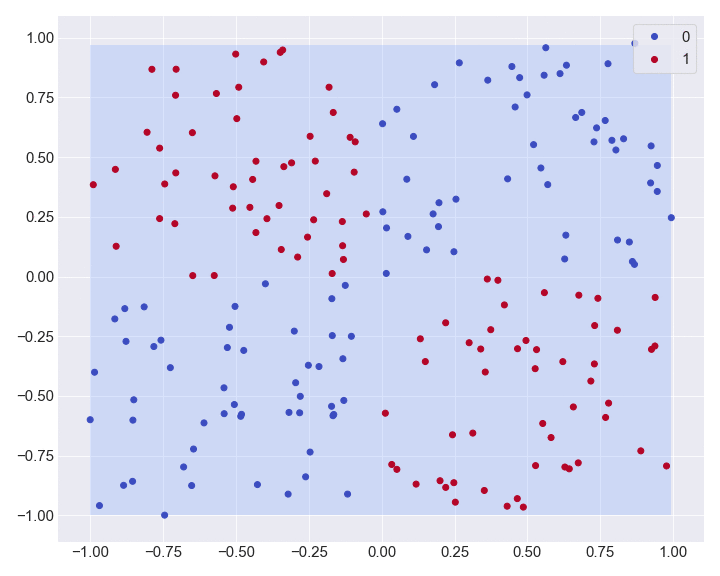- 1. Table of Content
- 2. Overview
- 3. Status
- 4. Documentation
- 5. Get Started
- 6. Notebooks
- 7. References
NETS is a light-weight Deep Learning Python package, made using only (mostly) numpy. This project was first introduced as an assignment at the University of Oslo, which is similar to the second assignment from Stanford University.
However, this project was pushed further to make it OOP with an easier API. In addition, the back-propagation and update rules where changed, using a custom autograd system. NETS was highly inspired from PyTorch and TensorFlow packages.
NETS package has NO CLAIMS to shadow already well build deep learning packages like PyTorch or TensorFlow. Instead, this package was made to understand how all of these libraries work and handle forward / backward propagation by making one from scratch. As I am going through this deep understanding, I found interesting to share as much as possible my work, which I hope will help students or people who want to learn more about this subject.
All packages within NETS are made from scratch, using mainly numpy. However, some additional packages can offer a better experience if installed (saving checkpoints and models for example).
- numpy
- json (Optional)
- time (Optional)
- pandas (Optional)
- scipy (Optional)
- sklearn (Optional)
To install this package from PyPi
$ pip install netsor from this repository
$ git clone https://github.com/arthurdjn/nets
$ cd nets
$ pip install .| Development | Status | Feature |
|---|---|---|
| Autograd System | finished |
|
| Optimization | finished |
|
| Loss | in progress |
|
| Solver | finished |
|
| Data | finished |
|
| Dense Neural Network | finished |
|
| Convolutional Neural Network | finished |
|
| Recurrent Neural Network | in progress |
|
The documentation and tutorials are in process and will be released soon. You will find some tutorials and application on how to get started or build a similar package.
NETS architecture follows the one from PyTorch.
It provides a basic neural network structure so you can create your own with numpy. You will need to
wrap your arrays in a Tensor class to keep track of the gradients, just like in PyTorch.
NETS uses a forward & backward pass for gradient descent optimizations (NOTE: there are now other optimizers !).
You can also uses the autograd system (recommended). It behaves similarly as Pytorch, except it is entirely done with NumPy.
import nets
t1 = nets.Tensor([1, 2, 3], require_grad=True)
t2 = nets.Tensor([4, 5, 6])
t3 = t1 + t2
# t3 now requires gradient
t3 = t3.sum()
# Compute the gradients for t1
t3.backward()A model is a Modulesubclass, where biases, weights and parameters transformations are computed.
All modules have a forward method, that MUST be overwritten.
This method will compute the forward propagation from an input tensor, and compute the transformation.
If using the autograd system, no back-propagation need to be added. However,
if you prefer to manually compute the gradients, you will need to override the backward method.
Your Model should inherits from the Module class and override
the forward method.
import nets
import nets.nn as nn
class Model(nn.Module):
"""
Create your own model.
The attributes should be your submodels used during the forward pass.
You don't have to necessary affect the activation function as an attribute,
unless you want to set a manual backward pass.
"""
def __init__(self, input_dim, hidden_dim, output_dim):
# Initialization
super().__init__() # Don't forget to add this line
self.layer1 = nn.Linear(input_dim, hidden_dim)
self.layer2 = nn.Linear(hidden_dim, hidden_dim)
self.layer3 = nn.Linear(hidden_dim, output_dim)
def forward(self, inputs):
# Forward pass
out1 = nets.tanh(self.layer1(inputs))
out2 = nets.tanh(self.layer2(out1))
return self.layer3(out2)
model = Model(10, 100, 2)
# Let's check the architecture
modelOut:
Model(
(layer1): Linear(input_dim=10, output_dim=100, bias=True)
(layer2): Linear(input_dim=100, output_dim=100, bias=True)
(layer3): Linear(input_dim=100, output_dim=2, bias=True)
)Again, this is really similar to what PyTorch offers.
-
This tutorial highlights the main part and modules of NETS.
-
1 - Build an Autograd System with NumPy
To be released
-
2 - Build a Feed Forward Neural Network with NumPy
Build a Fully Connected Neural Network for image classification.
-
3 - Build a Convolutional Neural Network with NumPy
Build a Convolutional Neural Network for image classification.
Here is a list of tutorials and lectures/assignment that helped to develop NETS






